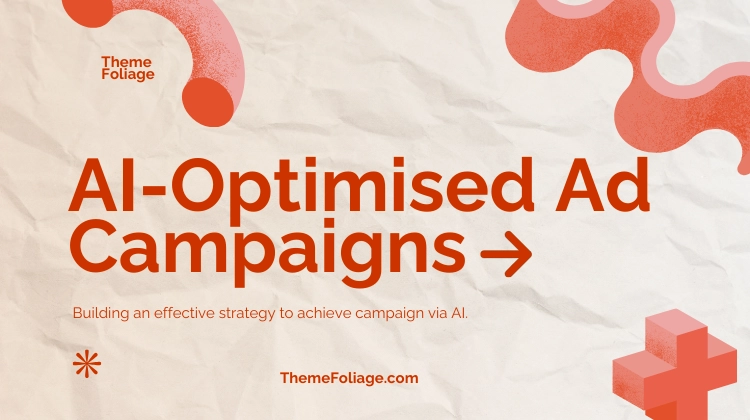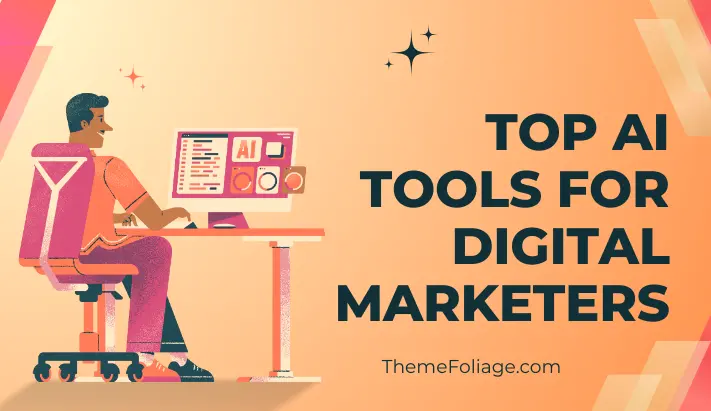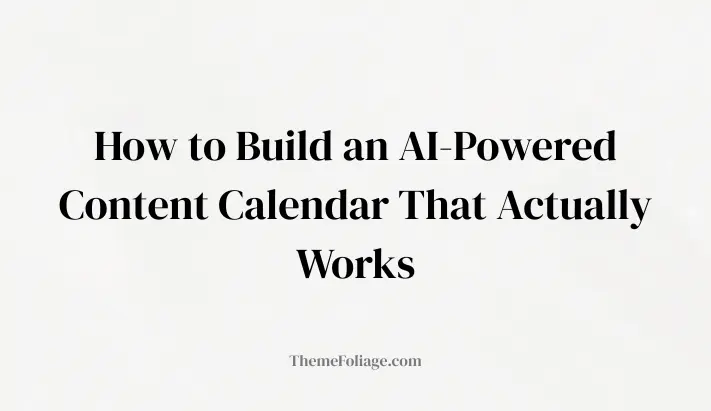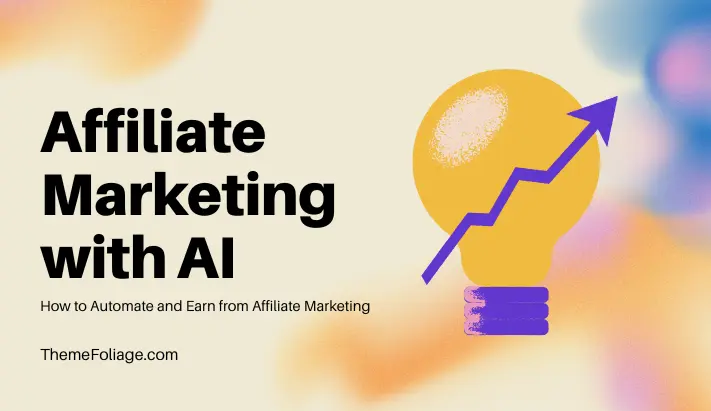Digital advertising has always been about precision: reaching the right audience, with the right message, at the right time. In 2025, this principle is being redefined by artificial intelligence. AI optimised ad campaigns are no longer experimental, they are the standard for businesses seeking efficiency, accuracy and measurable returns.
This article explores what AI-optimised ad campaigns are, why they matter, the tools driving them, real-world examples, challenges to consider, and how you can implement them effectively.
What Are AI-Optimised Ad Campaigns?
AI-optimised ad campaigns use machine learning algorithms to analyse data, predict outcomes and automatically adjust targeting, bidding and creative elements.
Unlike traditional campaigns that rely heavily on manual adjustments, AI campaigns adapt in real time, ensuring that every advertising dollar is maximised.
For example, instead of a marketer manually adjusting bids on Google Ads, AI can automatically increase bids for high-intent users while reducing spend on low-performing segments.
Similarly, AI can test hundreds of creative variations simultaneously, scaling the best performers and pausing underperformers without human intervention.
As WordStream highlighted in its 2025 trends report, “AI-optimised ad campaigns will become the norm, with platforms embedding AI into every stage of campaign creation, from targeting to creative testing.”
Why AI is Transforming Advertising
AI brings several advantages to digital advertising that traditional methods cannot match:
- Real-Time Optimisation: Campaigns adjust instantly to performance data. If a particular audience segment is converting at a higher rate, AI reallocates budget to that segment automatically.
- Predictive Analytics: AI forecasts which audiences are most likely to convert based on historical data, browsing behaviour and intent signals. This allows marketers to target prospects before competitors even identify them.
- Creative Testing at Scale: Instead of manually A/B testing two or three ad variations, AI can test dozens simultaneously, learning which headlines, images and calls-to-action resonate best.
- Cost Efficiency: Budgets are allocated dynamically to maximise ROI. AI ensures that spend is directed towards the most profitable channels, audiences and creatives.
- Cross-Channel Consistency: AI can manage campaigns across multiple platforms—Google, Meta, LinkedIn, TikTok—ensuring consistent messaging and optimal performance everywhere.
Key AI Advertising Tools in 2025
Several platforms are leading the way in AI-optimised ad campaigns. Make sure you check the prices of these tools from their pricing page on their website. Here are some of the most widely used tools:
- Google Ads AI: Google’s ad platform now integrates predictive bidding and automated creative testing. Advertisers can rely on AI to adjust bids based on user intent signals, device type, time of day and even weather conditions.
- Meta Advantage+: Facebook and Instagram campaigns use AI to optimise placements, creative and audience segmentation. Advantage+ can automatically generate multiple ad variations and deliver them to the audiences most likely to convert.
- AdRoll (from $36/month): Provides cross-channel AI optimisation for display, social and email campaigns. AdRoll’s AI engine analyses customer journeys and ensures ads are shown at the right stage of the funnel.
- RevealBot (from $99/month): Automates ad management across Facebook, Instagram and Google. RevealBot uses AI to pause underperforming ads, scale winners and adjust budgets in real time.
- Albert.ai (custom pricing): A fully autonomous AI marketing platform that manages campaigns end-to-end, from targeting to creative optimisation. Albert.ai is often described as a “self-driving car for digital advertising.”
- Phrasee (from $500/month for enterprise): Specialises in AI-generated ad copy and email subject lines. Phrasee uses natural language generation to create persuasive, brand-consistent messaging.
You should also read our Top 10 AI Tools for Digital Marketers article to find out better and cheaper tools to help you create an ad campaign for your business or client.
Real-World Example
A mid-sized e-commerce brand selling home fitness equipment implemented AI-optimised ad campaigns using Meta Advantage+ and RevealBot.
- Challenge: Rising ad costs and declining ROI due to increased competition.
- Solution: The brand allowed AI to manage bidding, creative testing and audience segmentation.
- Results: Within three months, cost-per-acquisition dropped by 28%, return on ad spend increased by 42%, and revenue from paid ads grew by $120,000.
This case demonstrates how AI can deliver measurable improvements in both efficiency and profitability.
How to Implement AI-Optimised Ad Campaigns
- Define Clear Objectives: AI thrives on data. Establish clear goals such as lead generation, sales or brand awareness. Without defined objectives, AI cannot optimise effectively.
- Leverage Predictive Targeting: Use AI tools to identify high-intent audiences. Predictive analytics can highlight prospects who are most likely to convert, allowing you to focus spend where it matters most.
- Automate Creative Testing: Upload multiple ad variations—different headlines, images, CTAs—and let AI determine which resonates best. This saves time and ensures data-driven creative decisions.
- Integrate Cross-Channel Campaigns: AI works best when it has access to data across platforms. Integrate campaigns across Google, Meta, LinkedIn and TikTok to allow AI to optimise holistically.
- Monitor and Refine: While AI handles optimisation, human oversight ensures campaigns remain aligned with brand values, compliance standards and ethical considerations.
Challenges to Consider
Despite its benefits, AI-optimised ad campaigns are not without challenges:
- Data Privacy: Stricter regulations such as GDPR and CCPA require transparency in data usage. Marketers must ensure compliance while leveraging AI.
- Over-Reliance on Automation: AI cannot replace human creativity, empathy or strategic thinking. A balance between automation and human oversight is essential.
- Platform Dependence: Relying solely on one platform’s AI may limit flexibility. Diversifying tools and maintaining manual control where necessary is advisable.
- Bias in Algorithms: AI models are only as good as the data they are trained on. Biased data can lead to skewed targeting and missed opportunities.
The Future of AI in Advertising
Looking ahead, AI will not only optimise campaigns, but also simulate outcomes before launch. Marketers will be able to test entire strategies virtually, reducing risk and improving efficiency.
Dynamic, context-aware ads that adapt to user sentiment, location and even external events such as weather or news will become commonplace. For example, an AI system could automatically switch ad creatives to promote umbrellas during unexpected rain in a specific city.
As Forbes predicted, “The future of advertising will be defined by AI systems that anticipate consumer needs before consumers themselves are aware of them.”
Final Thoughts
AI-optimised ad campaigns represent the future of digital advertising. By combining predictive analytics, automation and creative testing, businesses can achieve unprecedented efficiency and ROI.
The most successful marketers in 2025 will be those who embrace AI not just as a tactical tool, but as a strategic partner. By doing so, they will reduce wasted spend, improve customer experiences and stay ahead in an increasingly competitive digital landscape.



